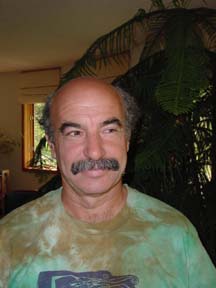From Earth Policy Institute
Janet Larsen
Standing before the United Nations General Assembly in October 1987, Maumoon Abdul Gayoom, President of the Maldives, made an appeal representing “an endangered nation.” That year for the first time, “unusual high waves” in the Indian Ocean inundated a quarter of the urban area on the capital island of Male’, flooded farms, and washed away reclaimed land. Gayoom cited scientific evidence that human activities were releasing greenhouse gases that warm the planet, ultimately raising global sea level as glaciers melt and warmer water expands. The trouble extended beyond small islands; studies showed that rising seas would wreak havoc on the U.S. Gulf Coast, the Netherlands, and the river deltas of Egypt and Bangladesh.
Fast-forward through two decades of swelling seas and more powerful storms and the call has moved from the need to study global warming to the necessity of dramatic action to stabilize climate. With small island nations in peril, these days President Gayoom evokes the vision of a United Nations where “name plates are gone; seats are empty.” He does not speak alone: this fall, some 50 countries, including a number of small island nations along with Australia, Canada, New Zealand, and the European Union, are planning to put a resolution before the U.N. General Assembly requesting that the U.N. Security Council address “the threat posed by climate change to international peace and security.” As Ambassador Stuart Beck of Palau has asked, “Would any nation facing an invading army not do the same?”
Janet Larsen
Standing before the United Nations General Assembly in October 1987, Maumoon Abdul Gayoom, President of the Maldives, made an appeal representing “an endangered nation.” That year for the first time, “unusual high waves” in the Indian Ocean inundated a quarter of the urban area on the capital island of Male’, flooded farms, and washed away reclaimed land. Gayoom cited scientific evidence that human activities were releasing greenhouse gases that warm the planet, ultimately raising global sea level as glaciers melt and warmer water expands. The trouble extended beyond small islands; studies showed that rising seas would wreak havoc on the U.S. Gulf Coast, the Netherlands, and the river deltas of Egypt and Bangladesh.
Fast-forward through two decades of swelling seas and more powerful storms and the call has moved from the need to study global warming to the necessity of dramatic action to stabilize climate. With small island nations in peril, these days President Gayoom evokes the vision of a United Nations where “name plates are gone; seats are empty.” He does not speak alone: this fall, some 50 countries, including a number of small island nations along with Australia, Canada, New Zealand, and the European Union, are planning to put a resolution before the U.N. General Assembly requesting that the U.N. Security Council address “the threat posed by climate change to international peace and security.” As Ambassador Stuart Beck of Palau has asked, “Would any nation facing an invading army not do the same?”

No comments:
Post a Comment